pinax - A plate or plaque. Among the other types of Greek vases are the alabastron, amphora, hydria, kantharos, krater, kyathos, kylix, lekythos, oinochoe, pelike, phiale, pithos, pyxis, and rhyton.
pinch, pinch-pot - Pinching is a pottery technique, fundamental to manipulating clay. Making a pinch-pot is pressing the thumb into a ball of clay, and drawing the clay out into a pot by repeatedly squeezing the clay between the thumb and fingers. Among their first adventures with clay, K-2 students should have ample opportunities to make pinch-pots, the initial goals of which are: thin walls (from center of bottom to the lip), a smooth inner surface, and identity marked on the underside.
pinhole camera - In photography, an extremely simple camera — a box having no lens other than an extremely small aperture. It's a great, inexpensive, hands-on means to learning the basics of how a camera works.

Don't be misled by the size of the fisherman; a pinhole camera can be as large as he suggests, but most are about the size of a shoebox. Exposure time is dependent on the size of the camera (distance from lens to film), the size of the pin hole, the sensitivity of the emulsion, and the brightness of the ambient light. The average pin hole is .02 inch. The diameter of the average pin shaft is .025 inch. A small pin hole, (just the tip of a pin) is likely to be .015 inch. A hole of about .02 of an inch will require an exposure of about 1 minute using RC Glossy photographic paper as a negative, but if the pin hole is a little smaller (.015 of an inch) about 2 minutes is necessary. A smaller hole is better because the smaller the hole the longer the exposure should be; the longer the time, the less problematic a mis-timing of a few seconds will be. To attain greater precision, figure the lens's f/stop. You can do this by dividing the distance of the hole to the emulsion by the diameter of the pin hole. The dividend is the f/stop. Knowing the f/stop (usually around f/200), use a hand held lightmeter to take a light reading, and calculate the exposure time. [Thanks to Wm. Rapf, Souhegan High School, Amherst, NH.]
Before making one that uses photographic paper, you may want to try this simpler one that utilizes tracing paper. For this type (thanks to Konica of Japan), all you need is a milk carton, scissors, a black marker, a pin, tape and some tracing paper:

Other resources concerning pinhole cameras:
Also see camera lucida and camera obscura.
pinnacle - In architecture,
a tower, primarily ornamental, that also functions
in Gothic architecture to give additional
weight to a buttress or a
pier.
"Pinnacle" can also
refer to such a land feature as Arizona's beautiful Pinnacle Peak.
It is depicted in the seal of the Paradise Valley Unified School District.
Related link:
The Glossary of Medieval Art and Architecture defines pinnacle and provides an illustration.
Also see crocket, crown, and finial.
pinnate - Feather-shaped.
pint - A unit of liquid measurement (in the US) equal to 16 ounce (fluid), or half a quart. To convert pints into liters, multiply them by 0.4731176; into tablespoons, x 32. Abbreviated pt.
pique assiette or picassiette - Pique assiette (sometimes picassiette) is a style of mosaic or tiling which incorporates ceramic shards — found pieces of broken plates, dishes, cups, etc. — into a design.
(pr. peek AH-see-ET)
This term has a convolutedly poetic French origin. Various authorities say pique assiette means "stolen plate," "plate stealer," or "broken plate." A "pique-assiette" is also what the French call a scrounger — someone whose objective in stealing a plate would most likely be the food on it. "Piqué" is the slang equivalent to "crazy" and "nuts." Some credit the earliest uses of pique assiette and picassiette as art terms to the neighborhood critics of French folk artist Raymond Isidore (1900-1964). In the 1930s, Isidore, a cemetery sweeper by trade, obsessively embellished his house in Chartes, now known as La Maison Picassiette, with intricate mosaics of colorful shards, both inside and out. "Picassiette" is likely a pun on "Picasso," whose cubist paintings have been compared to collected shards.
This type of mosaic is also sometimes called "shardware" or "memoryware."
Architect Antoni Gaudí (Spanish, 1852-1926) used waste tiles to clad buildings, a practice closely related to pique-assiette called trencadis. He was fortunate to have a number of ceramics factories nearby. His collaborator, Josep Maria Jujol (Spanish, 1879-1949) developed this further, breaking and reassembling new tiles. In addition to the mosaics produced in Güell Park (Parc Güell), Barcelona, he incorporated broken colored glass bottles, plates from his own dinner service and even fragments of a porcelain doll. At the beginning of the twentieth century, this kind of collage approach was highly inovative. Such other artists as Picasso and Dali would later visit the Guell Park, and it seems likely that their assemblage and collage works developed roots in Jujol's work.
Since no found material is obtained from an art supply shop, those who produce pique assiette must be resourceful in obtaining old ceramics — in either shard or pre-broken form. (Stealing is not an option to the ethical artist.) Luckily much is broken every day, and many an old dish can be found for resale. This distant relative to archaeology might be called "urban beachcombing." The process of discovery becomes part of finished objects.
Examples:
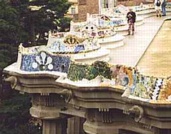
Antoni Gaudí (Spanish, 1852-1926),
the serpentine bench at Güell Park (Parc Güell),
1900-1914, Barcelona, Spain.
![]()

![]()
Telephoto
shot of the top of the bench.

![]()

Details of the bench.
See serpentine and telephoto.
Related link:
pitch - Any of a variety of thick, dark, resinous substances obtained from the distillation residue of coal tar, wood tar, or petroleum. One type is burgundy pitch. Pitch is used as the material of a model on which to hammer (raising) sheet metal. It is commonly used for waterproofing, roofing, caulking, and paving.
 pitcher or
pitching hammer or pitching tool - A broad, heavy stone carving
chisel, used to strike off
pieces of stone in roughing out a carving. Pitcher might also
refer to a ewer. [Not to be confused with picture !]
pitcher or
pitching hammer or pitching tool - A broad, heavy stone carving
chisel, used to strike off
pieces of stone in roughing out a carving. Pitcher might also
refer to a ewer. [Not to be confused with picture !]
Related link:
pithos - A large, ceramic storage vessel frequently set upon the earth and therefore possessing no flat base. It usually has a lid, and was often used for storing a large quantity of grain or oil, or for a human burial. The plural form of this Greek term is pithoi. (pr. pith'aws) Among the other types of Greek vases are the alabastron, amphora, hydria, kantharos, krater, kyathos, kylix, lekythos, oinochoe, pelike, phiale, pinax, pyxis, and rhyton.
Examples:

Greece,
Cycladic, Large pithos, terra
cotta with relief decoration,
c. 675 BCE,
Archaeological Museum of Thera. The metope
on the neck of the vase is decorated
with a swan and the band on the shoulder shows two chariots drawn
by winged horses. It was taken from a child-burial at the cemetery
of ancient Thera, on the north slope of Mt. Sellada.

Etruria, Caeretan, Pithos with Lid, second half of the 7th
century BCE,
terra cotta, height
90 cm (without lid: 76 cm), maximum diameter
51.3 cm, George Ortiz collection.

Greek, Pithos, early Hellenistic, coil
constructed terra cotta, height 70 cm. This pithos, lying
on the ground with a hole in its side, is seen just after it
was dug up. It had perhaps been used for grain storage. A page
by archaeologist R. C. Henrickson, presents more pictures
and text about this pithos. See archaeology.
pixel - Short for "picture element," a dot of color on a video or computer screen, similar to the grains in a photograph, or dots in half-tone rat. On a computer monitor, each pixel can represent a number of different shades or colors, depending upon how much storage space is allocated for it.
(pr. PIK-səl)
Also see 8-bit image, 24-bit image, gestalt, moiré, and pixel shim.
pixel shim - A very small (as small as one pixel
wide and one pixel high)
transparent GIF
that a Web page
designers use to adjust placement
of text and images. Between![]() the
the![]() words
words![]() of
of![]() this
this![]() sentence
sentence![]() are
are![]() pixel
pixel![]() shims,
shims,![]() each
each![]() one
one![]() pixel
pixel![]() high,
high,![]() and
and![]() progressively
progressively![]() from
from![]() one
one![]() pixel
pixel![]() wide
wide![]() to
to![]() 23
23![]() pixels
pixels![]() wide.
wide.
placeholder or place-holder - A word or an image that is used instead of the actual name or image of a person or thing that probably has a more specific name or image. The person or thing may simply not have been named yet or its name has been forgotten, or there is some other reason to provide a substitute, as there is for a euphemism. Placeholder words include: artifact, deelybob, deelybobber, device, doodad, doohicky, framisater-frezahmerator, gadget, gizmo, hoozywhat, item, object, stuff, thingamabob, thingamajig, thingy, whatchamacallit, whatchamajigger, what's-it, and widget. Such words are also known in Britain as cadigans, and by William Safire (contemporary American writer) as tongue-tippers. In the visual arts, such words are often used for materials, tools, or parts that one doesn't presently have a remembered or more specific word for. Works of art for which we do not have titles are often called Untitled. In graphic design, placeholding "lorem ipsum . . . ", sometimes called greeking, because of the antique appearance of the text traditionally used. A placeholding image is sometimes displayed to show where an image will or would normally appear.
Example placeholder images:
![]()

![]()

![]()

![]()

![]()
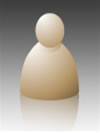
Also see censorship, lacuna, mannequin, and model.
placement - Arrangement.
Quote:
Also see balance, composition, depth, letter spacing (and kerning), movement, niche, order, overlap, perspective, pixel shim, point of view, principles of design, sequence, and space.
plagiarism - The taking of ideas, writings or other creative work of someone else, passing them off as one's own.
(pr. PLAY-jə-rizm)
Also see appropriation, authentic, copy, copyright, counterfeit, droit moral, fake, forgery, likeness, original, reproduction, simulacrum, and trompe l'oeil.
plan - The horizontal arrangement of things in an area, or a drawing, diagram, or map, shown as if seen from above, and made to scale. In architecture, such a drawing or diagram of the parts of a building — either it's a floor plan, a roof plan, or it's a horizontal cross-section of a building at some other level. A site plan represents an environment within which architectural or artistic designs may be located.
Examples:
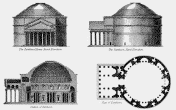
English, from the Encyclopedia Britannica,
1897: Four
views of the Roman Pantheon, 118 CE: front elevation, flank elevation,
cross-section, and floor plan, late 19th century, engraving. The
plan is the image on the lower-right. See cross-section,
elevation, and pantheon.

Borobudur —
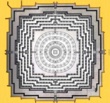 one of the most magnificent
Buddhist shrines
in the world — was built at the end of the 9th century by the
Hindu kings of the Sailendra dynasty. Borobudur is located 42
kms west of Yogyakarta, on the island of Java in Indonesia.
one of the most magnificent
Buddhist shrines
in the world — was built at the end of the 9th century by the
Hindu kings of the Sailendra dynasty. Borobudur is located 42
kms west of Yogyakarta, on the island of Java in Indonesia. The plan
for this stupa is a schematized representation of the cosmos,
a mandala. After visiting
its lower terraces decorated with bas-relief,
pilgrims attain the shrine's crowning stupa, which symbolizes the Absolute.
Also see representation.
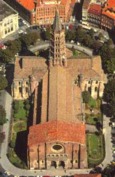
![]()

![]()
France, Toulouse, St. Sernin, c.
1080-1120, a Romanesque cathedral. An aerial view photograph of St. Sernin from one
angle (the tower is of 1250 with its spire of 1478 belongs
to the Gothic
period) and from another angle.
A floor plan of St. Sernin. See cruciform
and nave.

Villard de Honnecourt (French, Picardy, 13th
century), Plan by Villard and Pierre de Corbie / Meaux
Choir Plan, c. 1230-1235, pen and ink
over leadpoint and stylus
on parchment, c. 240 x 160
mm. This is the recto of the
fifteenth leaf in a portfolio of 33 leaves, Bibliotheque Nationale,
Paris.\
Frank Lloyd Wright (American, 1869-1959), Plan for Taliesin III, near Spring Green, Wisconsin, c. 1925, ink, graphite, and colored pencil on tracing paper. Describing Taliesin in An Autobiography, in 1932, Wright wrote "This modest human program in terms of rural Wisconsin arranged itself around the hilltop in a series of four varied courts leading into one another, courts together forming a sort of drive along the hillside flanked by low buildings on one side and flower gardens against the stone walls that retained the hill-crown on the other." Also see an elevation drawing and an aerial view, each made for Taliesin II, 1914.
Architectural Vision Group Ltd., Site Plan for Fairview Park Middle and High School, 2004.
Also see axial plan, central plan, choose, cross-section, didactic, esquisse, full-scale, spontaneity, and square schematization.
plane - Any flat level or surface. An example of a work in which planes are an important element:

Pablo Picasso, Bottle of Vieux Marc, Glass, Guitar and Newspaper,
1913, collage
and pen and ink
on blue paper, 46.7 x 62.5 cm, Tate
Gallery, London. Pablo Picasso, one of the greatest of the modern masters,
had a long and prolific life during which time he worked in a
variety of styles. The period, however, for which he is the most
highly regarded, is known as cubism.
This is an example of analytic
cubism. With a limited palette
and just a modest arrangement
of still life objects,
Picasso brilliantly investigates how forms
exist in space. Cubism asks
the viewer to consider the rudimentary problem of how it is that
we perceive objects and come to actually know and understand
their physicality. Different angles and viewpoints are interwoven
through a series of overlapping
planes.
Internet resources concerned with plane:
Also see angle, cross-section, plan, and straight.
planish - To smooth metal by hammering with overlapping blows. Planishing produces small indentations on the metal's surface. This is often done to silver when either raising, sinking or embossing it.
(pr. PLA-nəsh)
planography - A process for printing from a smooth surface. Lithography and offset are both planographic printing processes.
plaster trap - A receptacle fitted under a sink to provide a filter in the draining system. Waste plaster is strained off when tools, etc., are being cleaned. Using plaster without such a trap risks expensive repairs to drainage pipes.
Also see clean up.
plastic - That which is modeled, or which can be modeled; also said to have plasticity or plastic quality. (Distinguished from glyptic.) Or, having the qualities of sculpture; being well formed. Also, any of various organic compounds produced by polymerization (many are petroleum byproducts), capable of being molded, extruded, or cast into various shape. It can be made highly transparent, translucent, or opaque.
Also see acrylics, basket, cel, cellocut, cellophane, fiberglass, glass, inflatable, Lucite, memory, nylon, packaging, plastic art and plastic arts, Plasticine, Plexiglas, polyester resins, polyethylene, polymer, polymer clay, polypropylene, polystyrene, polyurethane, polyvinyl acetate, polyvinyl alcohol, polyvinyl chloride, resin, vitrine, and wood.
plastic art and plastic arts - First of all, such uses of "plastic" very rarely refer to art made with petroleum byproducts, but instead to the original meaning of "plasticity or plastic quality" — sculptural, modeled, or malleable. The singular form, "plastic art" generally refers to three-dimensional art, such as sculpture, as distinguished from drawing and painting; also, two-dimensional art which strives for an illusion of depth. The plural form, "plastic arts" generally refers to one or more of the visual arts, which include sculpture, architecture, painting, drawing, and the graphic arts; as distinguished from music, poetry, literature, dance, and theater. The terms "plastic art" and "plastic arts" are used much more by British than by American writers. ArtPage suspects these terms so often confuse readers that it recommends the use of alternatives. Among those, consider visual culture, as well as the older terms art, the arts, artifact, beaux-arts, fine art, applied arts, commercial art, and graphic arts.
Plasticine® - A brand name ("a trademark owned by the Bluebird Toys group of companies") for a modeling clay (oil-based as opposed to ceramic water-based clays) is available in many colors. It cannot be fired or glazed. It softens as it is modeled by the hands (because of their warmth), pieces being joined to each other by pressing them together and blending with fingertips.
(pr. PLA-stə-seen)
Also see polymer clay.
plasticity or plastic quality - The three-dimensional quality of sculptured or constructed forms. Plasticity can also refer to the quality of a material which can be easily manipulated — modeled, molded or pressed into a desired shape; malleable and yet holding its shape. Clay is an example of a material which can be extremely plastic. Alexander Calder (American, 1898-1976) enjoyed the plasticity of wire; Claes Oldenburg (Swedish-American, 1929) has enjoyed using vinyl, plaster and several other materials for their plasticity.
Also see plastic, plastic art and plastic arts, and Plasticine.
plate - A smooth, flat, relatively thin, rigid object of uniform thickness. May refer to any of the following: a sheet of metal, electroplate, a sheet of any material prepared to be inked in order to make prints, a print (especially when produced for a book), a light-sensitive sheet of glass or metal used in a photographic process, or a very shallow vessel.
Also see iconograph.
platinum - A heavy, precious, noncoroding, ductile, malleable metal, usually grayish-white, used mainly in jewelry in the form of alloy.
pleat - A fold in cloth made by doubling the fabric upon itself and then pressing or stitching it into place.
Also see costume, declivity, kerf, mark, rugosity, and textile.
en plein air - French for "in the open air," used chiefly to describe paintings that have been executed outdoors, rather than in the studio. Plein air painting was taken up by the English painters Richard Parks Bonington (1802-1828) and John Constable (1776-1837), and the French Barbizon School, and it became central to Impressionism. Its popularity was aided by the development of easily portable painting equipment and materials, including paints sold in tubes. The equivalent term in Italian is "alfresco," which is also used by English-speakers.
(pr. ə pləh-nayr)
Examples of pictures painted "en plein air":

Édouard Manet (French, 1832-1883),
Boating, 1874, oil
on canvas, 38 1/4 x 51 1/4
inches (97.2 x 130.2 cm), Metropolitan Museum of Art, NY. (On
the Met's page, you can enlarge any detail.) See Realism and Impressionism.
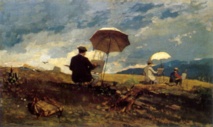
Winslow Homer (American, 1836-1910), Artists Sketching in the White Mountains, 1868, oil on wood panel, 9 7/16 x 15 13/16 inches, Portland Museum of Art, ME. These are painters working en plein air. See realism.

Claude Monet (French, 1840-1926), Woman with a Parasol — Madame Monet [Camille]
and her Son (La Promenade. La Femme à l'Ombrelle),
oil on canvas,
100 x 81 cm, 1875. See Impressionism.
Claude Monet, The Boat Studio (Le bateau atelier), 1876, oil on canvas, 28 3/8 x 23 1/2 inches (72 x 59.8 cm), Barnes Foundation, Merion, Pennsylvania. See easel and Impressionism.

John Singer Sargent (American, 1856-1925),
Claude Monet Painting by the Edge of a Wood,
c. 1885, oil on canvas,
54.0 x 64.8 cm, Tate Gallery, London. Although not usually considered
an Impressionist, Sargent was enthusiastic about painting en
plein air, as he did this portrait of his friend, Impressionist
painter Claude Monet.

John Singer Sargent, Carnation, Lily, Lily, Rose, 1885-6,
oil on canvas,
174.0 x 153.7 cm, Tate Gallery, London. Sargent painted this
picture out of doors during a very brief period each evening
when the light was at the same level,
just after sunset (a time and kind of light called crepuscular).
This procedure was explored by many Impressionist painters, and
by Claude Monet most notably.
Related links:
PlexiGlas® - A trademark for an acrylic plastic available in sheet or rod form. PlexiGlas can be transparent or translucent, and is available in many colors.
Also see cellocut, fiberglass, Lucite®, polyester resins, and resin.
plinth - A block of wood or stone sometimes placed beneath a sculpture or a column; a narrow, vertical, rectangular stone base.
Also see niche, pedestal, and socle.
plop art - Any work which is neither site-specific nor appealing to the viewer. Invariably a term of derision, this term was coined by Americans in the public art community.
Quote:
[Paul Fedries, in The Word Spy, reports that glop art is "an underground art movement that involves sticking chewing gum strategically on poster faces." I know of no other citation of this movement, but am keeping my eyes open! - MRD]
plug - An insertion, generally cylindrical in shape. When applied to metal sculpture, it refers to an insert of the same or similar material as the sculpture. Such an insert is best threaded, screwed into a drilled hole (for example where there has been a flaw), and then sawn off and filed down.
plumbago - See graphite.
pluralism - The doctrine that numerous distinct ethnic, religious, and cultural groups should and do coexist, and that no single group is superior to others. This is very similar to multiculturalism. The opposite is particularism. Pluralism is also used to refer to art in the 1970s and 1980s, when the great variety of attitudes and style was taken as a sign of cultural vigor. It has been seen as one of the hallmarks of postmodernism, encouraging divergent perceptions of the world, and arguing against the setting of any single standard.
Also see feminism and feminist art, gender issues, political correctness, xenophilia, xenophobia, and zeitgeist.
https://inform.quest/_art